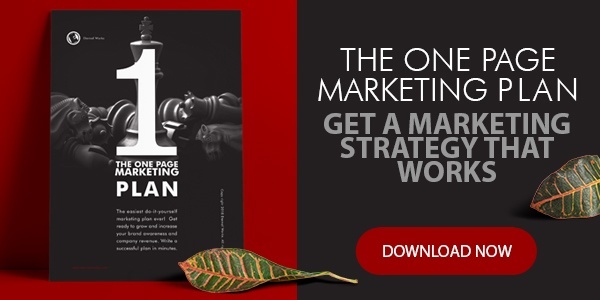Personalization in marketing utilizes analytics to make unique advertising messages and products for each customer. It entails more than incorporating customer names into a standard email that goes to all your customers.
It's all about conveying the right message to the right person at the right time with suitable offerings. This approach gives your content a touch of humanity and ultimately helps drive revenue. This post explains the basics of personalization in marketing and why you should adopt it in your marketing strategy.
What is Personalization in Marketing?
Personalized marketing (also referred to as one-to-one marketing) is a technique used by marketers to create unique customer experiences. You can develop tailored product recommendations, exclusive offers, and dynamic content with personalized marketing.
This marketing approach uses customer data based on interactions, demographics, interests, purchase history, and preferences. You then use this data to tailor the content your audience receives via email, ads, newsletters, or other marketing methodologies. This marketing strategy aims to improve the user experience by addressing the unique needs of every customer and their perceived interests before they reveal them. By implementing the right marketing strategies, companies can engage prospective and potential customers with their business.
Types of Personalization in Marketing
There are different ways to use personalization in marketing. You can customize your emails, website, social media ads, and even your sales efforts to address customer interests. Here are three examples:
1. Website personalization
Increased customer engagement is essential in any marketing strategy. As a marketer, your goal should be to engage with your target customers and how they respond to your products. Customers who are halfway down the sales funnel or those who have made at least two purchases may discontinue the journey or not make any future purchases.
You can prevent the risks of losing these leads altogether by customizing products that fit their previous purchase history. Web page personalization entails creating visually appealing pages with products that capture the target customer's interests. This way, you can connect with your customers through recommended products and dynamic content.
2. Email personalization
Another excellent way to connect with customers is through email personalization. Note that email personalization doesn't stop at the subject line, but should address customer interests throughout the email. If your business has an extensive customer base, you need to find a strategic way to deliver the right message to the right audience.
This can be achieved by email segmentation. You can segment your email list based on the recipient job industry or demographics. You can utilize machine learning to target users based on their geography, location, browsing behavior, and purchase history. This results in more personalized outcomes.
3. ads and sales personalization
Personalized ads and sales include product and service recommendations that can be utilized in B2B and B2C companies. Website algorithms use customer purchase history and browsing behavior to curate recommendations that align with customer preferences.
Personalized sales allow the user to view other related products and services, similar products and services purchased by other customers, or offer relevant deals and discounts on certain types of products and services. This data can be collected through:
- Website interactions and browsing history;
- User-generated data;
- Real-time data (location, time, and day);
- Technographic profile.
How to Personalize Your Marketing?
If you're looking to add marketing personalization to improve your business, it's important to follow the right strategy. You need to have a CRM in place to help you personalize and contextualize your content. Once that's in place, you can start capturing user data and better cater to your buyer personas. Then you will be able to identify what your prospects (even current customers) are interested in so that you can create and implement the right strategy to meet their needs. Here's a quick punch list to get you started:
1. Collect Data
While users want personalized experiences, they are highly protective of their data. No one wants their personal information made available to the public. So be sure to obtain permission and stick to the permission granted in the use of data.
2. Perform Segmentation
Once you start to obtain the necessary data, the next step is to segment users based on interests, stage of the buyer's journey, pain point, purchase patterns, and product interests. Remember that not all of these categories will support your marketing, so decide which ones are relevant to your marketing campaign.
3. Find A Marketing Medium
There are many avenues you can use to run personalized marketing campaigns. Whether it's your landing pages, social media channels, automated emails, or remarketing ads, find one platform where your customers spend more time and use it.
Advantages of Personalization
When done right, personalization marketing can bring immense benefits for both the customer and the business, creating a win-win situation. The following are some of the benefits you can expect with properly executed personalization in marketing:
- Better customer experience: Customers are likely to avail personal information to their preferred brand if they're assured of something in return. They'll fill out forms, sign up for newsletters, download whitepapers, etc., to get a discount or relevant offer. And when they do, they'll leave you with a rich database of relevant information you can use to customize their future experiences.
- Boost revenue. By identifying and addressing user interests and preferences they will more easily return for repeat purchases which will lead to increased revenue.
- Increase customer loyalty. When customers share their information and data, and in return, it leads to a better more relevant experience for them, they are more inclined to remain loyal to your brand in the future.
- Consistent multi-channel interactions: Consumers are everywhere: on the web, social platforms, chatrooms, etc. When you create personalized marketing across multiple channels, you can simultaneously target different customer segments, creating consistent interactions across several platforms.
Disadvantages of Personalization
Every marketing strategy has its challenges, and personalized marketing is no exception. Here are some of the most common pitfalls you're likely to face with this approach:
- Outdated technology: Outdated technology may not work in the digital era of apps and software. And since data collection and automation are critical elements in this strategy, you need to work with sophisticated algorithms. Finding technology to help with this endeavor can be a hurdle for some businesses.
- Time and resources. Besides working with the right software, you'll also need a team of professionals. Unfortunately, this can be a challenge for companies that lack the resources or time to build such a team.
- Linking relevant data: To create the ideal personalized experiences for each customer, you need accurate data to create a seamless experience and clear picture of who the customer is and what their needs are. However, according to research, this is no mean feat as most struggle with linking individual customer data to their profiles.
Examples of Personalization
Here are a few examples of how companies are using personalization in their marketing efforts. Do you recognize any of these in your day-to-day interactions?
Web Examples
- Apple Music offers personalized recommendations
- Airbnb uses web personalization to improve the choice of place for your next vacation
Email Examples
- OpenTable helps customers to discover new restaurants as well as make online reservations based on previous reservation behavior
- Spotify produces emails with the user's interest in mind, based on previously played music
Ad Examples
- Shutterfly improves the customer experience by offering relevant ads
- Coca-Cola ran a campaign people are still talking about that allowed you to personalize your Coke bottle
Sales Examples
- Amazon is generating sales by giving customers relevant content that aligns with their interests, search history, and previous purchases
Improve Your Marketing Efforts with Personalization
Consumer demands continue to shift towards personalized experiences in their buying journeys. With a carefully tailored personalized marketing strategy, you can be sure to drive engagement and revenue.



